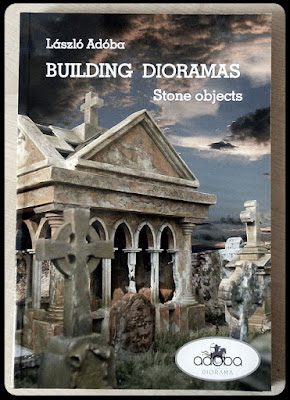 |
John Singer Sargent: Graveyard in the Tyrol, 1914 |
After a month-long hiatus, I'm back with the most important and the most obvious type of cemetery terrain: graves. I wanted a mix of different types of grave markers in terms of shape and material, and a mix of different ways of basing (single, row, area). This is what I've done so far:
 |
| John Sargent's watercolour painting (above) made me start thinking about ways to make wrought iron crosses. |
 |
| I was afraid they would be too easy to break, but it turns out they don't fall apart too readily. The balsa crosses put together using PVA are sturdy enough, too. |
 |
| Single graves with wood and metal crosses. All scratch built. |
 |
| Single graves with stone markers. The first marker was made of plaster, from scratch; the second one is a plaster copy of a Zenit Minitures grave marker; the third is from the Garden of Morr set. |
* * *
Grave crosses can come in a myriad of shape varieties, sizes and materials. Below you'll find half a dozen representative step-by-step examples I've prepared.
Materials used:
- PVA glue
- superglue
- balsa: 1mm, 2mm
- plastic fence
- pins
- metal rings
- paperclips
- card
- paper
- plastic tubes
 |
| 1. The most basic form of a wooden cross; 2mm balsa. |
 |
| 2. Wooden cross with a wooden roof. Starting from the basic shape, I added extra detail with 1mm balsa. |
 |
| 3. This one has a metal roof, and a plate on its front. Both are cardboard, carefully cut with a scalpel and glued into place with superglue. |
 |
This was good for a start, and I've learned some things through experimenting. I have six individual graves and three of these bases of grave markers in a line, but for a decent-looking cemetery I'll need at least twice as many.
* * *
Another thing I made in the meantime is this crucifix:
This is the first of the several shrine pieces I've planned. But more of them and more about them (including how to make them, of course) in my next post.
 |
| As promised in the previous post's comment section, here is a group shot of all terrain pieces I've done in the Cemetery Project so far. |
* * *
And finally, I have a recommendation for you: books by László Adóba. Four of them arrived recently in my club's library, and I must say they're fantastic. They are all clear and very well written. The photographs are of good quality and the explanations are easy to follow.
Building Dioramas: Stone objects may be the most useful one for what I'm currently doing. This is the table of contents:
FOREWORD
Chapter I: Flower holders
Chapter II: Tombstones
Chapter III: Fountains, waterworks
Chapter IV: Equestrian monument
Chapter V: Mausoleum
Epilogue and preview
The author uses things like cardboard and polystyrene for his tombstones, which is something I haven't tried yet. There are instructions on building several different examples of fountains, which will definiely come in handy at some point in my terrain project.
Building Dioramas: Accessories teaches you how to make a whole array of different things: chairs, bookcases, bathtubs, lightbulbs, chicken roasts, pots, cutlery, iron fence, benches, curtains, a pool table complete with balls and cues... Table of contents:
Foreword
First chapter - Furniture
Second chapter - Miscellanous objects
Third chapter - Bathroom equipment
Fourth chapter - Food and tableware
Fifth chapter - Objects made of iron
 |
| Iron crosses in Chapter five of the book. I've picked up some useful tips here. |
 |
| The other pair of books, dealing with terrain&vegetation and urban scenes. Dirt, mud, rocks, trees, flowers, grass, bricks, cobblestones, roofs, doors, windows... |







